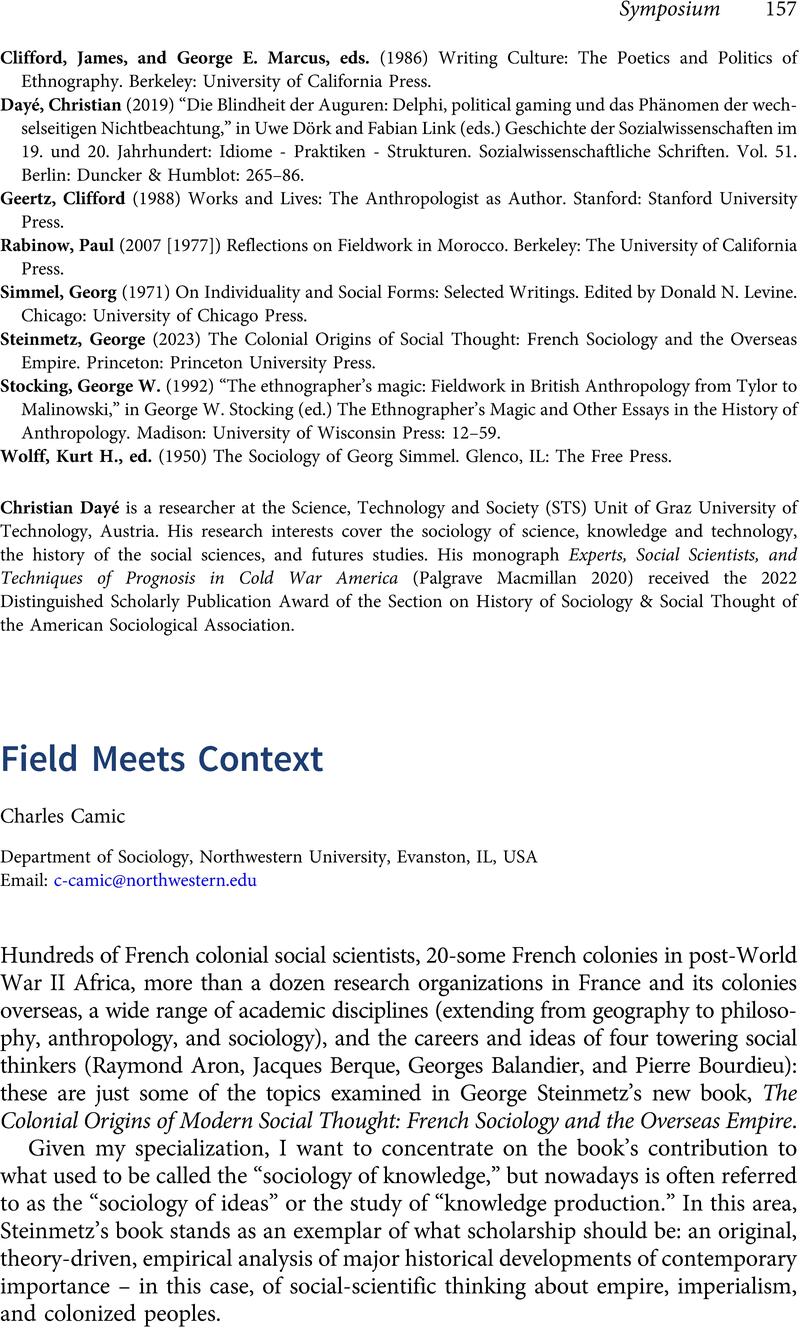No CrossRef data available.
Article contents
Field Meets Context
Published online by Cambridge University Press: 14 February 2024
Abstract
An abstract is not available for this content so a preview has been provided. Please use the Get access link above for information on how to access this content.

- Type
- Symposium
- Information
- Copyright
- © The Author(s), 2024. Published by Cambridge University Press on behalf of Social Science History Association
References
Bourdieu, Pierre (1990) “Animadversiones in Mertonem,” in Clark, Jon, Modgil, Celia, and Modgil, Sohan (eds.) Robert K. Merton: Consensus and Controversy. London: Falmer: 297–301.Google Scholar
Bourdieu, Pierre (1991 [1975]) The Political Ontology of Martin Heidegger. Oxford: Polity.Google Scholar
Bourdieu, Pierre (1993 [1983]) “The field of cultural production, or: the economic world reversed,” in Johnson, Randal (ed.) Pierre Bourdieu, The Field of Cultural Production. New York: Columbia University Press: 29–73.Google Scholar
Bourdieu, Pierre (1996 [1992]) The Rules of Art: Genesis and Structure of the Literary Field. Stanford: Stanford University Press.CrossRefGoogle Scholar
Bourdieu, Pierre (2005 [1995]) “The political field, the social science field, and the journalistic field,” in Benson, Rodney and Neveu, Erik (eds.) Bourdieu and the Journalistic Field. Cambridge, UK: Polity Press: 29–47.Google Scholar
Camic, Charles (2011) “Bourdieu’s cleft sociology of science.” Minerva (49): 275–93.CrossRefGoogle Scholar
Bourdieu, Pierre (2013) “Bourdieu’s two sociologies of knowledge,” in Gorski, Philip (ed.) Bourdieu and Historical Analysis. Durham, NC: Duke University Press: 183–211.Google Scholar
Medvetz, Thomas, and Sallaz, Jeffrey J., eds. (2018) The Oxford Handbook of Pierre Bourdieu. London: Oxford University Press.CrossRefGoogle Scholar
Steinmetz, George (2023) The Colonial Origins of Modern Social Thought: French Sociology and the Overseas Empire. Princeton, NJ: Princeton University Press.Google Scholar


